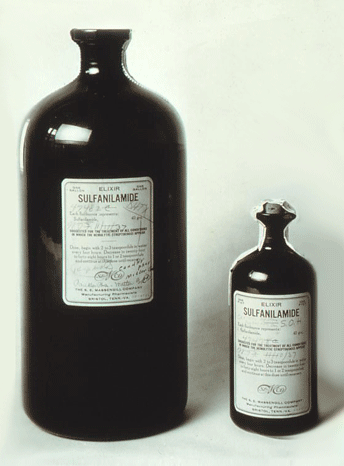 |

|
|
|
After the American Medical Association alerted the public to the Elixir Sulfanilamide deaths in October 1937, the FDA field staff was mobilized to make sure all of the drug was retrieved. Practically the entire field force of 239 FDA inspectors and chemists was assigned to the task. State and local health officials joined the search. Newspapers and radio stations continued to issue warnings. Eventually most of the elixir was recovered. Of 240 gallons manufactured and distributed, 234 gallons and 1 pint was retrieved; the remainder was consumed and caused the deaths of the victims.
|
|
|
November 16, 1937:
A Senate resolution directs the U.S. Department of Agriculture to give a full accounting of the "Elixir Sulfanilamide" tragedy. The drug, containing a poisonous solvent, was not safety tested and has killed 107 persons, many of them children. The incident will spur Congress to pass the Federal Food, Drug, and Cosmetic Act, which includes stronger drug safety requirements.
 |
|
 |
|
In addition to enforcing the strengthened requirements for drug safety testing in the Federal Food, Drug, and Cosmetic Act, in recent years the FDA has increased incentives for drug developers to conduct the controlled clinical trials that establish the safe use of drugs in children. Before these pediatric drug testing initiatives, clinical data were not available to guide decisions about the safety and effectiveness of many commonly used drugs for children. Drug trials needed to collect this information |
|
had not been conducted. Now, drug sponsors who agree to test drug treatments in children are able to market the drug without competition for an extended time, and the FDA is authorized to require sponsors to study the drug in children if it deems these studies are needed. This has dramatically increased the number of drugs approved and labeled for use in children, giving health practitioners the information they need to prescribe these drugs for younger patients.
|
|